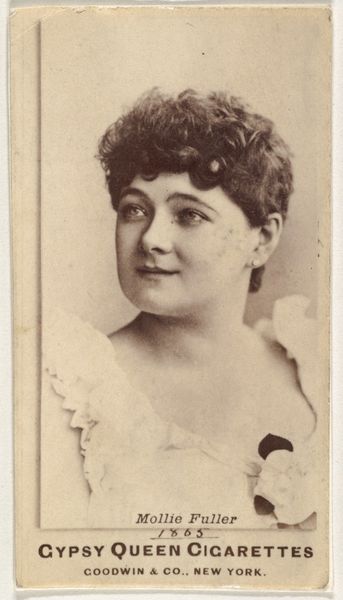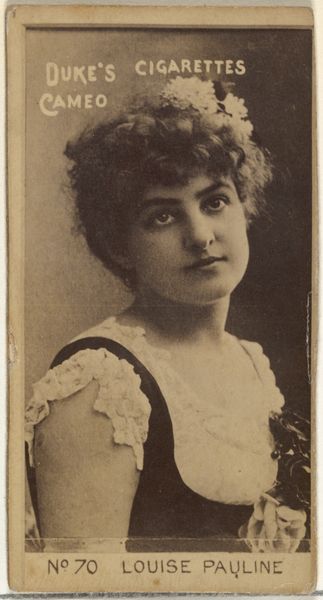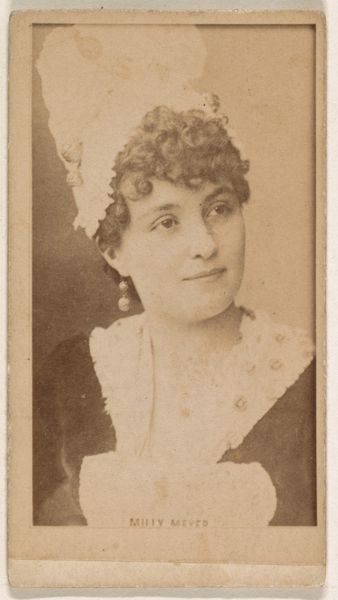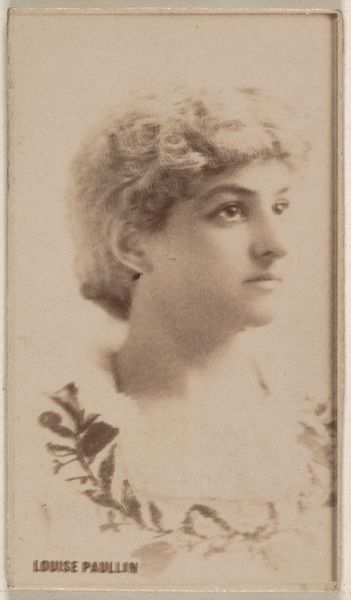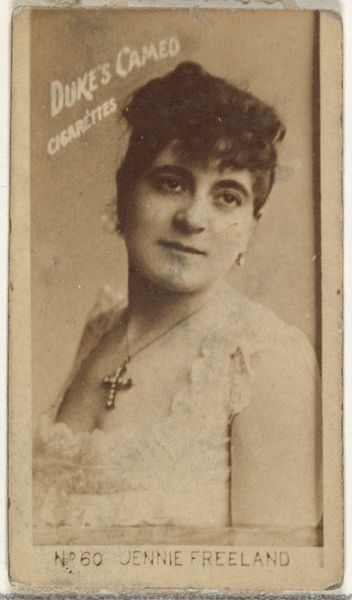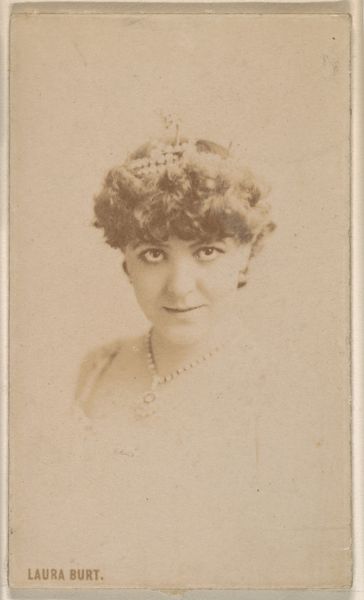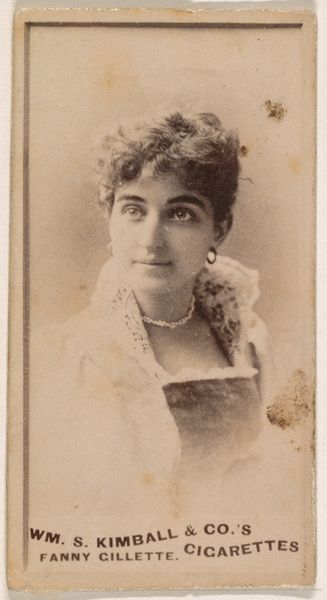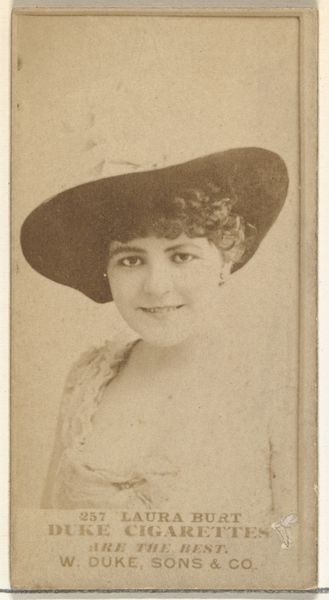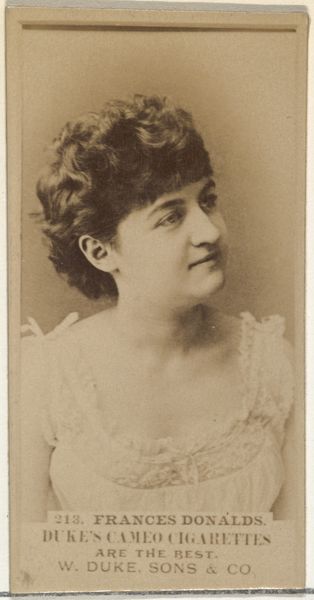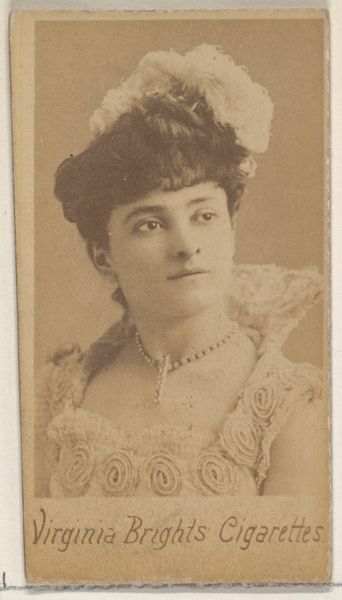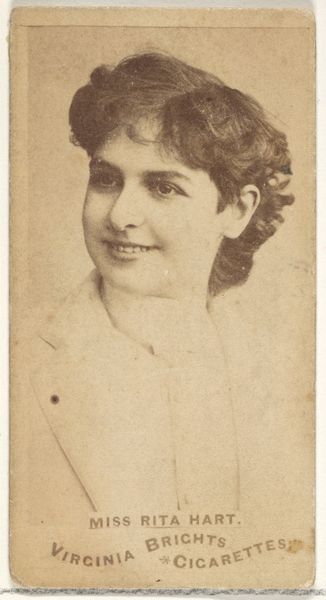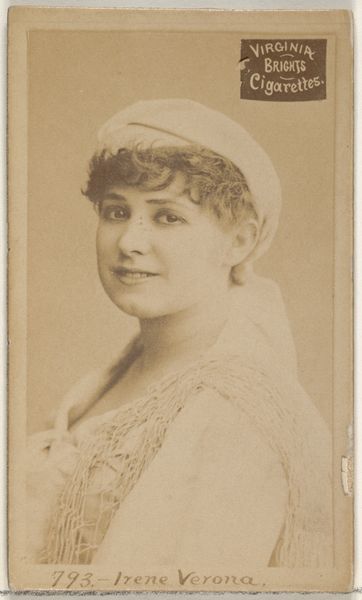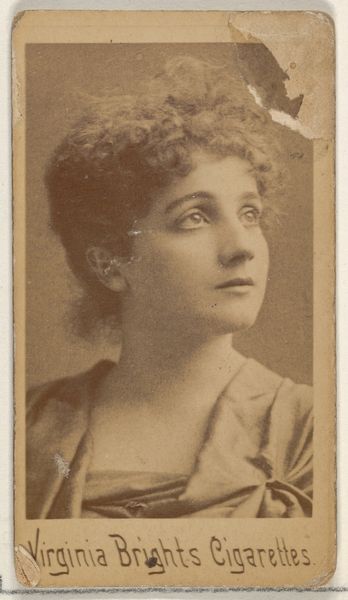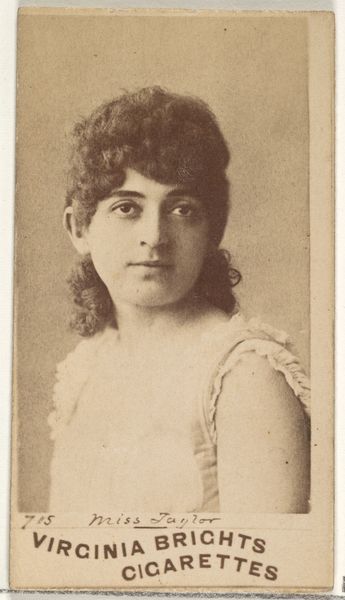
Card 610, Louise Paullin, from the Actors and Actresses series (N45, Type 1) for Virginia Brights Cigarettes 1885 - 1891
0:00
0:00
Dimensions: Sheet: 2 3/4 x 1 3/8 in. (7 x 3.5 cm)
Copyright: Public Domain
Curator: Immediately I see parallels between this and ukiyo-e prints from Japan, specifically the delicate portrayal of beauty. Editor: This is a piece titled "Card 610, Louise Paullin," and it comes from a series of trading cards called "Actors and Actresses" that was manufactured, likely between 1885 and 1891, to promote Virginia Brights Cigarettes. Curator: Yes, it feels almost like an idealized icon—Louise Paullin presented with what looks like a bouquet of hydrangeas, symbols often connected to heartfelt emotion and apology but here, it also alludes to popularity and excess. It creates a slightly melancholy effect. Editor: Exactly. It's an interesting collision of commercial marketing and, as you mentioned, these culturally loaded images of women and flowers. These cigarette cards were a tool of aggressive marketing, tapping into anxieties about social status and the allure of celebrities to promote nicotine addiction. Who was this actress and how might she have felt about being associated with cigarettes? Curator: Perhaps ambivalent, it reminds me of earlier Victorian mourning portraiture. Her slightly averted gaze hints at a loss of agency, maybe, or quiet defiance in a controlled situation. Editor: Her agency was very limited, though; she existed as a commodity for men's consumption. There's an uncanny mix of glamour and commodification. This also makes me think about the legacy of portraiture as power and representation of often white upper-class figures, reproduced to advance capitalist agendas. Curator: You can view her presence here as fraught but I find this tension very suggestive. She is more than a cipher here; she becomes a repository for our interpretations and desires across time, the flowers a delicate and subversive shield. Editor: Agreed. Looking at it again, Paullin seems less passively melancholic and more defiant. Maybe her reserved stance and gaze are resisting this limited definition imposed upon her, trying to convey something unsaid through the constraints of 19th-century conventions and marketing strategies. Curator: Ultimately, images endure because of their symbolic density. These ephemera offer rich potential for continued re-evaluation. Editor: Absolutely. Thinking about consumer culture in a historical and art-historical frame helps us better interpret power and identity.
Comments
No comments
Be the first to comment and join the conversation on the ultimate creative platform.
